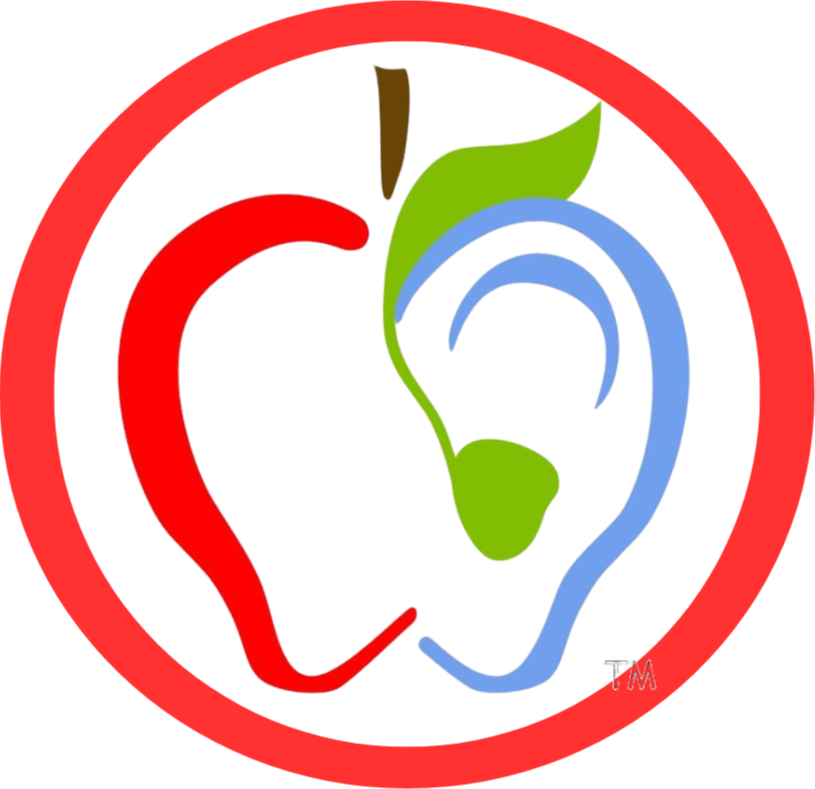Using Student Observation to Support Your Gen Ed Teacher
Sep 18, 2021
Did you know that the brain has a powerful need to finish what it starts? When it can't finish something, your brain makes a mental sticky note to finish it. Thoughts about what we could not finish lingers in the back of our minds as a way to remind us that something still needs to be completed. Although this natural mechanism exists to help us remember our “to do” list, it can also overwhelm us when that list is unending. (James and Kendell, 1997).
 Do you ever feel like the list of things you need to do to support your DHH child/student is unending? This is because you can never mentally “check off” that you have completed the task of meeting their needs. I know we are not supposed to use words like “always” or “never.” But in this case, the situation really is NEVER. As soon as you check something off your list, something new gets added. It's exhausting to have that mental list of uncompleted tasks.
Do you ever feel like the list of things you need to do to support your DHH child/student is unending? This is because you can never mentally “check off” that you have completed the task of meeting their needs. I know we are not supposed to use words like “always” or “never.” But in this case, the situation really is NEVER. As soon as you check something off your list, something new gets added. It's exhausting to have that mental list of uncompleted tasks.
Successful mainstreaming is really about enlisting the village of those who work with your students/child when you are not there.
It’s about building capacity and helping others really understand the impact of hearing loss. When you successfully enlist the village, it lightens your load as you work together with others to meet the needs of your DHH student.
Have you ever found yourself thinking, “They HAVE to modify the curriculum. It’s the law.”
This is true.
Now I want you to envision yourself as the classroom teacher. At the elementary level, you are responsible for maybe 25 students for almost all academic instruction. You probably have a new literacy or math curriculum (because isn’t there always a new curriculum?) and you have, just for the sake of this narrative, 7 special education students in your class. Some of them have significant behavior issues.
Now throw in a pandemic and you’re working with these students online - sometimes. Or not.
You are, to say the least, overwhelmed.
It’s not that you don’t want to better understand the needs of the Deaf or Hard of Hearing student in your class, it’s just that you have no personal experience with having a hearing loss so you really don’t understand what the big deal is anyway and quite frankly these other students require more of your brainpower and attention.
Sound like a familiar scenario?
This is when you want to pour into this teacher. To build capacity.
Not to “add to their list” of things to do, but to provide better understanding.
Typically, a Teacher of the Deaf/Hard of Hearing has expertise that includes skills and responsibilities in keeping up with:
- Technology and how to maximize the appropriate use of it
- Academic needs and how to support them
- Social-emotional needs; how to identify feelings of isolation and inferiority and how it connects to feelings about hearing loss
- Self-advocacy and how to improve it and
- Inservicing on the needs of DHH student.
Of course, as students get older, hopefully, their needs get less. If they don’t, this is even more challenging as there are generally more teachers involved in the student’s education at the secondary level.
With the changing landscape of service providers on the itinerant model, we need to shift our mindset from this as solely the Teacher of the Deaf/ Hard of Hearing role and responsibility.
What I am about to say will require a huge shift in paradigm thinking.…..
We MUST cultivate knowledge/understanding with other staff about the student.
Why? Because we can’t do it all, with every student on our caseload, at every school, all day long.
We just can’t.
If we are committed to cultivating knowledge/understanding with other staff about THEIR DHH student, that means our schedule and our practice must reflect this priority.
There are 3 keys to this process: visibility, approachability, and relationships.
My favorite way to accomplish all 3 of these key componants to the building capacity through your gen ed teachers comes in the form of your presence in the classroom.
With your elementary students that you see weekly, I personally recommend that you build observation into your IEP approximately once a month. This provides so much additional information on how your student is doing. Are they keeping up? Are they socializing with peers? Are there many interactions? How are their peers accepting them? Is the level of instruction appropriate? Is the student able to access everything that’s happening?
Yes, this even includes observing them online. You need to see how they are following what’s happening with the teacher. Are they at their computer? Are they engaged? Do they have distractions in the home? Do they require an adult to sit with them?
The key to this process is not looking like you are observing, but instead building observation into your involvement in the classroom.
Of course. make sure you connect with the teacher ahead of time and plan when you are coming. When there, avoid staying in the back. Instead, come during work time that you can walk around and interact with the students. Consider working out an opportunity to facilitate a small group activity that would involve not only your student but others as well. This could be a math group, reading group, or art project. This is a great way to get to know students. Your friendly presence in the classroom can break down invisible barriers and will make you more approachable, not only to the other students, but also to the teacher.

If your teacher is working with students online, you can lead a breakout room that includes your student and some of her peers.
This alone tends to break down any negativity and stigma that your DHH student may feel in working with you. Oftentimes, DHH students resent getting pulled out of their classroom. In my experience, this little act of being involved in the classroom virtually makes that stigma disappear. I’ve noticed that the more I am accepted into the classroom, the more excited the DHH student is to come and work with me, and often the other students request to join us.
Being able to observe your DHH student in his classroom community brings much to the table in terms of discussion and how you support the village in meeting his needs.
During this time, make sure you are friendly, approachable, and present yourself as an amazing support and resource not only for your DHH student, but also the gen ed teacher and the other students in the classroom. Smile a lot and be joyful - this is contagious. This makes you approachable and will build relationships with all that you are encountering.
As you continue to be present in the classroom and support the teacher, let them know when you’re coming and let them know what skills you are working on with your student both in and out of the classroom, the general education teacher will begin to understand better the needs of your student and what (and why) you are working with them.
Although these 3 tips (be visible, approachable and build relationships) don’t add anything to their list of things to do, it will begin to slowly build their capacity and understanding of the needs of their DHH student in the classroom.
Do you have questions about how you can build observation into your schedule and your IEP? Reach out to me at [email protected]
Want tools to support this process? Check out the Proffesional Academy and get resources, assessments and trainings that will train you and support you as you provide services for your DHH students.

